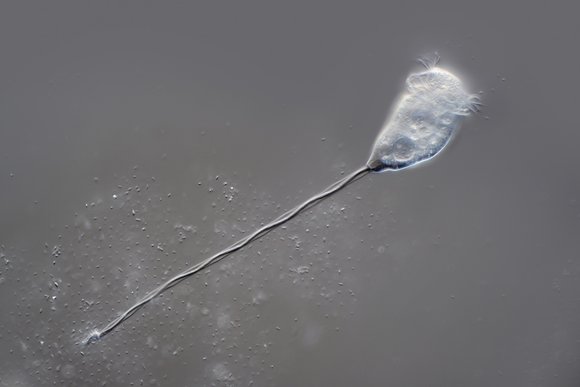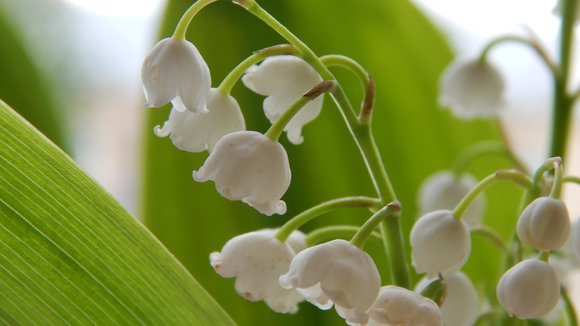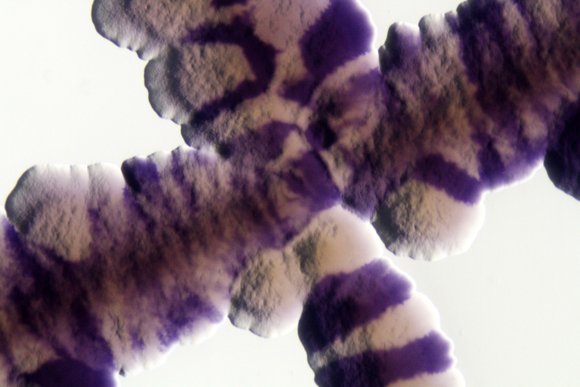I was in the middle of examining our petri dishes to make sure that what we expect to happen there is actually happening. I check to see whether we have a healthy, steadily growing population, free of other micro-organisms. But also to see if I need to add some food and if the petri dish is not getting too crowded. In that case we need to transfer part of the population to a new dish so they have room to develop.

Vorticella.
I am fascinated by these bell-shaped protozoa. They remind me of snowdrops, those delicate little white flowers. At least, my mother always used to call them snowdrops. In fact they are lily of the valley. But isn’t the resemblance striking? Vorticella have tiny hairs called cilia which they move to and fro in order to manoeuvre their food (bacteria) closer to their cell mouth. And before you know it, you’ve been staring at them for ages.

Lily of the valley.
Usually Vorticella attach themselves to a surface with their stalk. They like hanging onto acquatic plants, for example. They can pull in their stalk and move on if environmental conditions become unfavourable. They are one of the first organisms ever studied under the microscope by Antoni van Leeuwenhoek way back in 1702 and now everyone can see them live in Micropia . They are found in the waters of the Netherlands, among other countries, and they are only 50 micrometres in size. I'm going to ask my colleague Jennifer to take some photos. We have a special camera that can be fitted to our microscopes. It allows us to take microscopic pictures and I think the Vorticella are definitely worth a close-up! Hopefully you will be able to see the little hairs around the cell mouth clearly.
Vorticella.
Before I go, I’d like to tell you more about the test with the automatic cell counter, which I mentioned in my previous blog. The results turned out to be quite variable. After 14 daily measurements, we decided to abandon the test for now. To keep track of growth properly, you need to take the measurement at exactly the same time each day. And it should really be taken by the same person or someone who uses exactly the same method. But this is difficult when you have a busy team of people who all work different shifts. Other activities have been prioritized, such as expanding the collection! And that may well be the most fun part of my job.
When you work with 300 different micro-organisms, you learn something new every day. As our collection expands, my brain is like a sponge soaking up all kinds of new information. We are keen to keep up to date, so we are expanding our collection of micro-organisms with interesting algae, fungi or bacteria that we haven’t yet shown in the museum, but that we are growing in the laboratory. It might be because they can do something special or because they have been in the news. Then we can put them on display and tell you all about them in our lab talk .

Chromobacterium lividum.
For example, we have just had 11 new bacteria delivered, including Chromobacterium lividum, which immediately stands out because it’s a wonderful shade of purple. This bacterium occurs in the skin flora of some amphibians and helps protect them against infections. Not only are they able to make three different antibiotics, but they can produce anti-fungal and anti-viral agents too! All in all, it’s another remarkable micro-organism.
Time flies! Is it four o’clock already? Time for me to give another lab talk ! See you soon!
Bye for now, Ilja
